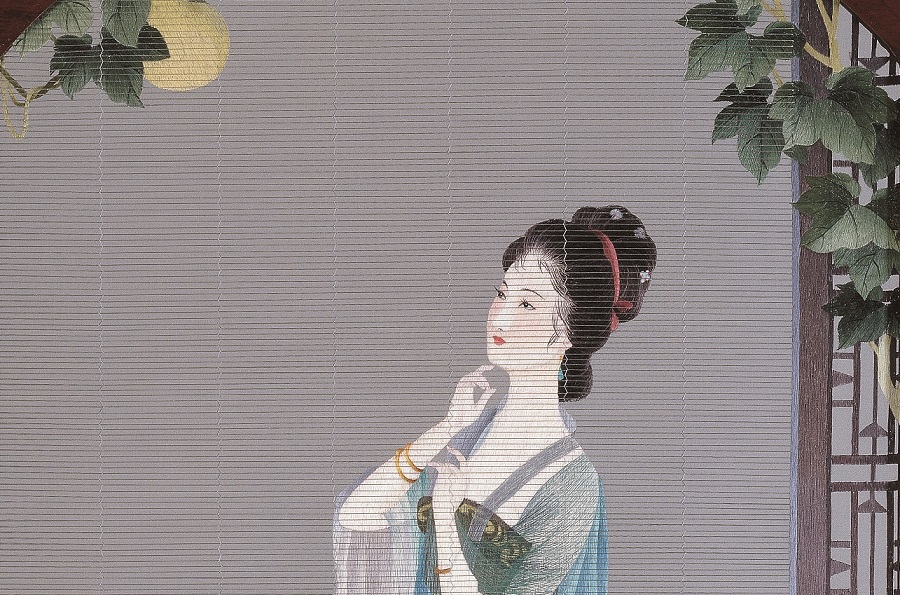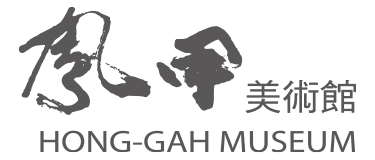BACK
Embroidery Archive Exhibition of Hong-Gah Museum 2017 Autumn

Hong-Gah Museum collected over 500 pieces of the 1950s modern embroidery art, where artworks spanned across a great variety of embroidering techniques and forms, making them the most luxurious private collection among the Asia-Pacific area.
Embroidery art has its origin in practical life usages such as clothing and interior ornament etc. Clinging closely to the changing aesthetics throughout different eras, it has gradually paved its way into the room of delicate fine arts.
As Song Dynasty highly valued the scholarly and refined, cultivated tastes, painting embroideries that imitate calligraphies and paintings of famous scholars were hence well-received. Needles and threads were the brush pens and inks of the embroiderers, while they not only precisely represented the strikes and flows of the brush pens on paper, but also vividly illustrated the spirits of characters. Moreover, the silkiness and glossiness of the threads had added lifelike effects onto the tableaux.
Techniques and the art of embroidery culminated during the modern era when embroiderers managed to achieve major professional breakthroughs with the support of maturing technological, environmental, as well as material conditions. Highly developed techniques and embroiderment such as imitation embroidery, free stitch embroidery, double-sided embroidery, dual variant embroidery technique etc. flourished and thus cultivated an advanced embroidery industry. Continuous explorations and inheritance of skills and artistry had written down the most brightly-colored chapter in the history of Chinese arts and crafts.
Moon Night
Upon looking, what meet the eyes are geese spreading their wings in the moonlight, while the leaves of willow dancing in the wind. Dynamics conveyed through the image has given viewers the sense of being present among the flapping wings and rustling leaves, while these sounds have accentuated the quietness in the moonlight, further illustrating the harmony and balance between movements and stillness.
Looking at the Moon
This piece is the classic of dual variant embroidery in Xiang embroidery (or Hunan embroidery), which took its idea of design based on the Tang poetry A Sigh from the Staircase of Jade by poet Li Bai. With the use of Terylene, a type of textile fibre made from polyester and is characterized by its lightness and crease-resistance, the embroidery had literary transcribed the coldness and mistiness from the refined poetry. On one side of the embroidery, one could see a dark-haired beauty turning to her side, glancing through a light veil and staring at the moon, seemed wandered and lost in her thoughts. On the other side, one could see the beauty by her delicate face, where light frown could be seen between her brows, as one wonders if there is someone who had kept her waiting for long. Multiple layers of black and white threads overlay one another, and while the work is so skillfully done, one could hardly discover the traces of needles.
Tiger in the Night
With the land all covered in snow and dead branches ladened with white, this work has been enveloped in desolateness and loneliness. Amidst of the components of black, white and grey, the only colored part is the tiger with its head up howling at the moon. Wandering lonely in the freezing cold and the perilous forest, the tiger seems lonesome yet unrestrained. The artist had applied the fluffy hair stitching method and made the tiger come alive with lifelike fur. Contrasting the main character against the backdrop with the use of colors, the tiger in a frosty night and under the chilly moon is thus vigorously portrayed.
Embroidery of Three Calligraphies of the Hall of Three Rarities
Emperor Qianlong of the Qing Dynasty had received three precious pieces of rare calligraphies, i.e. Timely Clearing after Snowfall by Wang Xizhi, Mid-Autumn by Wang Xianzhi, and A Letter to Boyuan by Wang Xun. And hence, He had named his private study as Hall of Three Rarities to house these favourite collections. Artist had meticulously perfected the signature seals and the expressive inscriptions, without a hitch being seen between needles and threads, which flawlessly transposed the flows of the original calligraphies.
Date:2017. 07.22-2017.11.12

Moon Night
Moon Night

Looking at the Moon
Looking at the Moon
Original work by Huang Cuifeng Embroidered by Wang Yuhui

Tiger in the Night
Tiger in the Night
Original work by Li Yan

Embroidery of Three Calligraphies of the Hall of Three Rarities
Embroidery of Three Calligraphies of the Hall of Three Rarities
Original designed by Yang Jinhui

